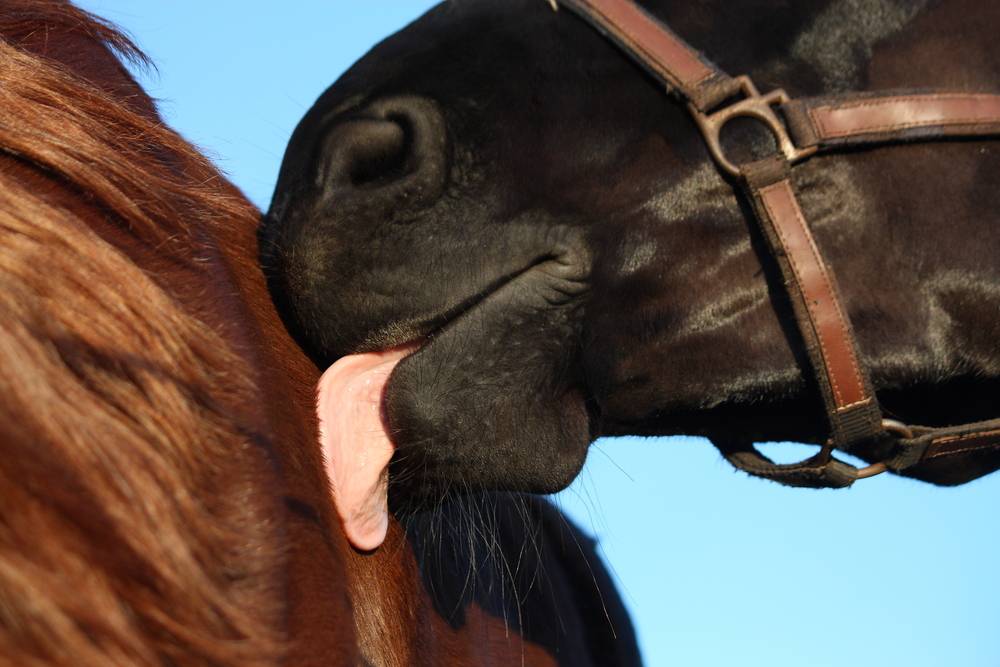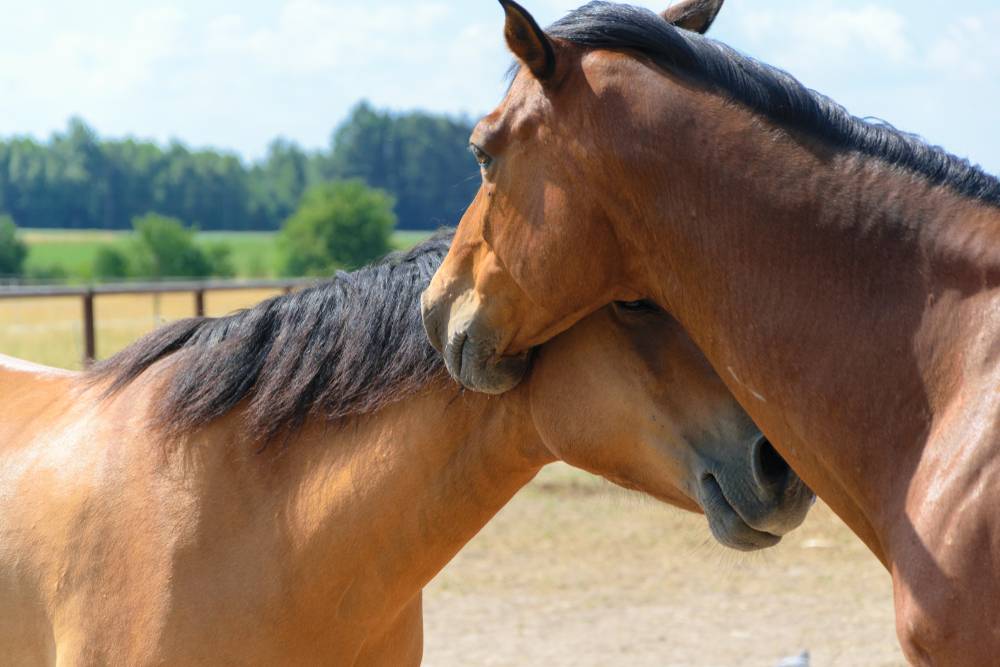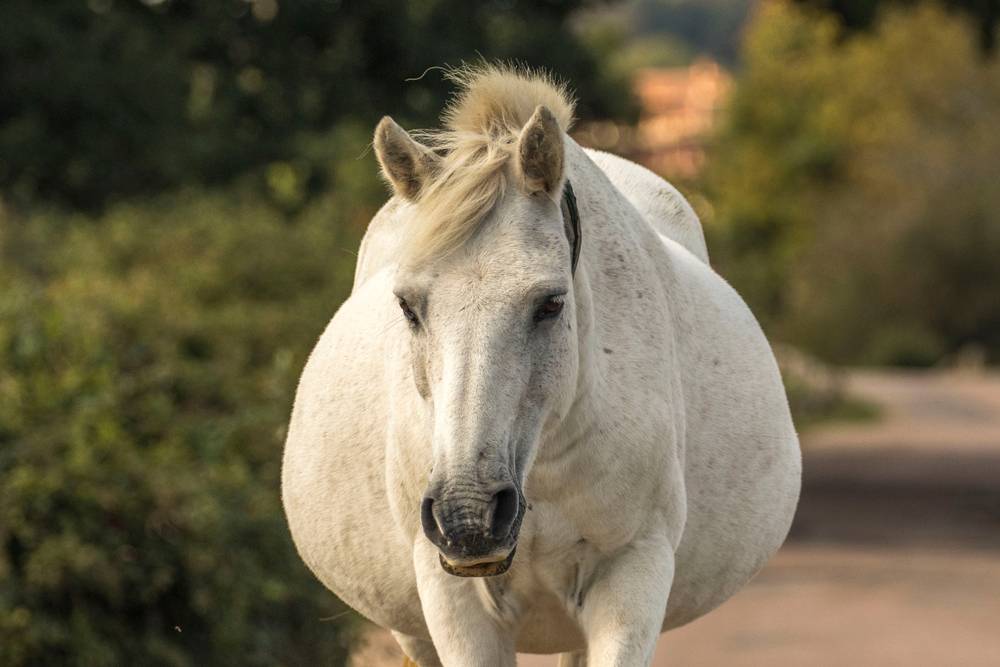
Gaining knowledge about horses’ reproductive process is captivating for enthusiasts and also crucial for breeders aiming to produce healthy and prosperous offspring. If you’re wondering how do horses mate, this article explains the anatomy, behaviors, and mating process of the animal.
The Reproductive Anatomy of Horses
Horses, similar to other mammals, have unique male and female reproductive anatomy. In males, stallions possess both external and internal reproductive organs. The testes play a vital role.
On the female side, mares have their own set of external and internal reproductive organs, and their reproductive cycle is referred to as the estrous cycle. Gaining knowledge about these anatomical structures forms the basis for understanding the process of horse mating.
Courtship and Behavior
The natural behaviors exhibited by stallions and mares during mating season offer a fascinating glimpse into the world of equine courtship. Stallions often engage in behaviors to establish dominance and hierarchy within a group. While courtship displays involving vocalizations, posturing, and chasing are crucial elements of this process.
Conversely, mares communicate their receptivity through behavioral signals such as increased urination frequency and tail raising. Pheromones emitted by mares play a pivotal role in conveying their reproductive status.

How Do Horses Mate – The Mating Process
The mating process involves coordinated behaviors from both stallions and mares. When a receptive mare is detected, the stallion’s behaviors become more focused and intentional. He may gently nuzzle and nip at the mare’s neck and flanks while emitting rhythmic snorting or soft nickering sounds. These actions aim to establish a connection and assess the mare’s readiness. As the courtship progresses, the stallion may exhibit a flehmen response, curling back his upper lip to enhance his sense of smell and evaluate the mare’s pheromones.
After the mare shows signs of being receptive, such as raising her tail, the stallion will approach. The stallion’s reproductive anatomy allows for quick mating due to its tissue. As he gets closer, the stallion may gently nuzzle the mare’s neck and back to assess her comfort and receptiveness.
With a precise maneuver, the stallion positions himself to mount the mare, he flexes his hips and elevates his tail. Simultaneously, the mare slightly raises her tail and flexes her hindquarters, facilitating the alignment of their reproductive organs.
The process of horse mating is incredibly brief, usually lasting less than a minute. When the job is done, the stallion dismounts, and both partners typically exhibit signs of relaxation and contentment.

Gestation and Pregnancy
After successful fertilization, the mare begins a gestation period that lasts around 11 months. During this time, the mare experiences various physiological and behavioral changes, such as weight gain and shifts in eating habits. Since the embryo develops into a fetus, the placenta forms and creates a crucial link for the exchange of nutrients between the mare and the developing foal. The placenta plays a role in eliminating waste and regulating hormones. Check our article on horse pregnancy to get the hang of the main stages and their peculiarities.
Birth and Postpartum Period
The birthing process of a female horse is known as parturition. This process is divided into four stages. Let’s get a deeper insight into horse labor.
Stage 1: Pre-Labor
During the initial stage, known as “pre-labor,” the mare’s behavior and physiology undergo subtle changes. Restlessness, pacing, frequent lying down, and weight shifting are observed. These actions signify the foal’s repositioning within the womb in preparation for birth. The mare’s udder may become swollen and filled with milk as her body readies itself for nursing.
Stage 2: Labor Onset
As parturition nears, the mare progresses to the second stage of labor. Contractions commence, and the mare’s behavior becomes more noticeable. She may paw the ground, roll, and lie down frequently. During this phase, the cervix starts to dilate, facilitating the foal’s movement into the birth canal. The amniotic sac, encompassing the foal, may rupture, leading to the release of clear fluid.
Stage 3: Delivery of the Foal
The third stage involves the delivery of the foal. As contractions persist, the front hooves of the foal appear first, followed by its nose. The mare may assume different positions, either standing or lying down, throughout this stage. With each contraction, the foal progresses until its shoulders and body are entirely out of the mare. Once the foal’s hips become visible, the remaining part of its body emerges swiftly and with synchronized motion.
With the help of a horse gestation calculator, you can get a precise date when the mare will labor.
Stage 4: Postpartum Expulsion
The fourth and final stage of parturition involves the expulsion of the placenta, commonly known as the “afterbirth.” Typically, this occurs within a few hours after the foal’s birth. The placenta, which facilitates nutrient exchange during pregnancy, separates from the mare’s uterine wall and is expelled through the outer canal. It is important to closely monitor this stage to ensure the complete expulsion of the placenta, as failure to do so may result in complications.
During the birthing process, the behavior and instincts of the mare are crucial. Soon after birth, she engages in licking and nuzzling the foal, stimulating circulation and encouraging its initial attempts to stand. This early interaction is vital for the bonding between the mare and foal. The mare’s maternal instincts are triggered, leading her to nurture and care for her newborn baby horse.

Breeding Techniques and Modern Practices
Recent developments in horse breeding have brought about significant advancements in the field. One such breakthrough is artificial insemination (AI), which enables breeders to optimize genetic potential by carefully selecting stallion semen based on specific traits. This technique not only overcomes geographical limitations but also reduces health risks associated with live cover. The use of embryo transfer has proven to be an innovative method for preserving valuable genetics, particularly in high-performance mares. These cutting-edge techniques play a crucial role in enhancing equine breeding practices and ensuring genetic diversity.
Challenges and Ethical Considerations
Although modern breeding techniques have their advantages, they also present certain difficulties. Inbreeding, which is frequently a cause for concern, can result in genetic health problems and diminished vitality in offspring. It is of utmost importance to prioritize the well-being of mares during the breeding process, ensuring ethical treatment and minimizing stress. Striking a harmonious balance between natural behaviors and human intervention is crucial to safeguarding the welfare of equines.
Conclusion
The fascinating process of horse mating is a captivating journey that showcases the wonders of nature. From flirting behaviors to fertilization and postpartum care, each stage highlights the beauty and complexity of equine reproduction. As technology progresses, it is crucial to integrate responsible breeding practices with natural behaviors to ensure the long-term health and genetic diversity of horses for future generations.
